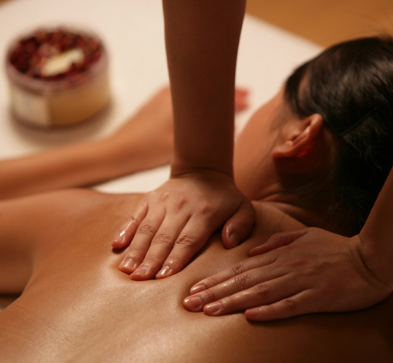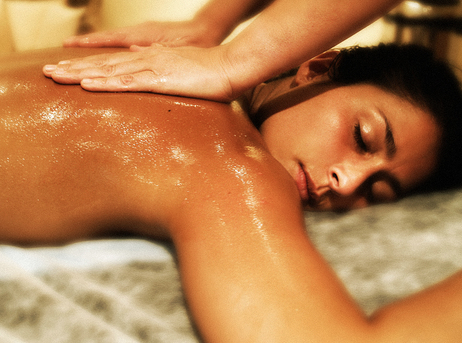Massages Offered
The Benefits Of Massage
What exactly are the benefits of receiving massage or bodywork treatments? Useful for all of the conditions listed below and more, massage can:
- 1. Alleviate low-back pain and improve range of motion.
- 2. Assist with shorter, easier labor for expectant mothers and shorten maternity hospital stays.
- 3. Ease medication dependence.
- 4. Enhance immunity by stimulating lymph flow—the body's natural defense system.
- 5. Exercise and stretch weak, tight, or atrophied muscles.
- 6. Help athletes of any level prepare for, and recover from, strenuous workouts.
- 7. Improve the condition of the body's largest organ—the skin.
- 8. Increase joint flexibility.
- 9. Lessen depression and anxiety.
- 10. Promote tissue regeneration, reducing scar tissue and stretchmarks.
- 11. Pump oxygen and nutrients into tissues and vital organs, improving circulation.
- 12. Reduce postsurgery adhesions and swelling.
- 13. Reduce spasms and cramping.
- 14. Relax and soften injured, tired, and overused muscles.
- 15. Release endorphins—amino acids that work as the body's natural painkiller.
- 16. Relieve migraine pain.

Swedish massage
Uses soothing, tapping and kneading strokes to work the entire body, relieving muscle tension and loosening sore joints. Swedish massage therapists use five basic strokes, which anyone can learn and use on themselves and others. They are effleurage (stroking); petrissage (muscles are lightly grabbed and lifted); friction (thumbs and fingertips work in deep circles into the thickest part of muscles); tapotement (chopping, beating, and tapping strokes); and vibration (fingers are pressed or flattened firmly on a muscle, then the area is shaken rapidly for a few seconds).
Deep tissue massage
Targets chronic tension in muscles that lie far below the surface of your body. You have five layers of muscle in your back, and while Swedish massage may help the first couple of layers, it won’t do much directly for the muscle underneath. Deep muscle techniques usually involve slow strokes, direct pressure or friction movements that go across the grain of the muscles. Massage therapists will use their fingers, thumbs or occasionally even elbows to apply the needed pressure.
Hot stone massage
Hot stone massage is a specialty massage where the therapist uses smooth, heated stones, either as an extension of their own hands, or by placing them on the body while they massage other parts of the body. The heat can be both deeply relaxing and help warm up tight muscles so the therapist can work more deeply, more quickly. ($25 additional, $105 total, 65 minute massage)
Sports massage
Sports therapy is simply applied to athletic clients, according to what their tissues respond to, but does often incorporate stretch and joint movements. It is a great addition to training, or any level of exercise to assist muscle tissue in getting back to a neutral state. Many clients report less soreness and improved range, with fewer injuries. It offers pre-workout or pre-competition sessions that warm up the tissue and prepare it for endurance.
Energy work
Energy work has various names such as Reiki, acupressure, craniosacral therapies. It is easily applied within the context of other strokes, or on its own. It can be integrated with any other therapy. Energy work is often a light touch therapy application, but has truly deep tissue influences. It also can be very relaxing or described as a harmonizing and some even describe transcendental experiences, which may have a deeply healing or spiritual effect.
Lymphatic drainage
A therapy intended to assist movement of fluid. Always a light, rhythmic touch therapy applied in specific areas where lymph nodes and lymph drainage routes are located. This therapy is intended for the reduction of inflammation, although not during active infection, and pathological edema.
Prenatal massage
Pregnancy is a unique state of being for a woman and can take its toll on her emotional and energetic state, as well as her physical wellbeing. As a women’s body expands and changes the muscles are pulled and stretched and may cause pain or discomfort, along with postural distortion and fatigue. A prenatal massage can assist in reducing some of these distresses. Prenatal massage is performed with the client in a side lying position surrounded by pillows to help support both mother and fetus. It can be a purely relaxing massage or a session concentrating on specific issues. All of our therapists are fully trained in pre and post natal massage.
Seated chair massage
Massage performed in a specifically designed massage chair. This massage is performed with the client fully dressed, does not utilize any creams, oils or lotions. Therefore, the intention is warming the tissues with combined trigger point therapy. It is a great way to introduce therapeutic touch to someone who has never received a massage.



